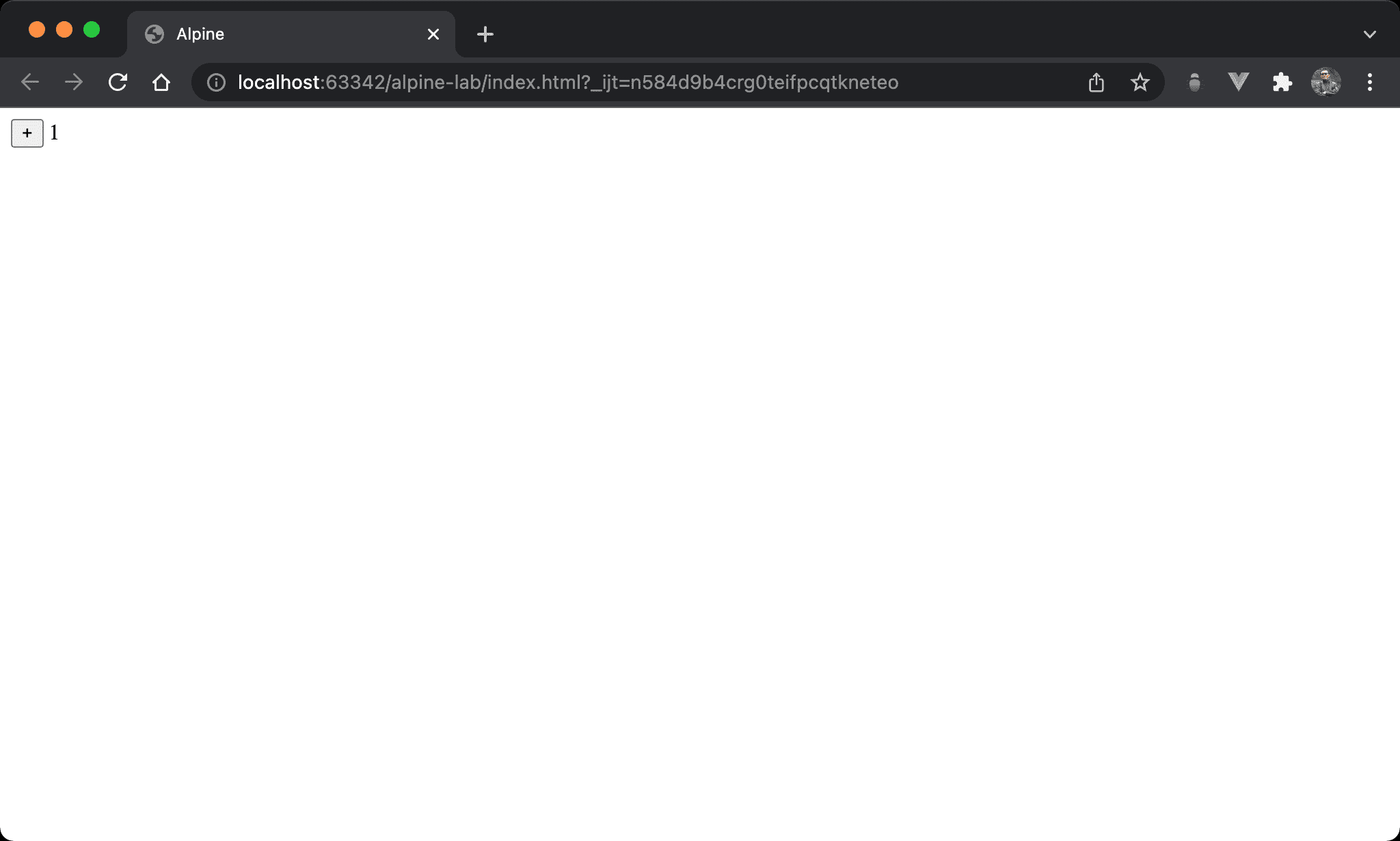Alpine is a lightweight framework for pure HTML pages. It is very small, and only 6kb is required. We can implement Alpine by TailwindCSS, Vue or Svelte style.
Version
Alpine 3.8
TailwindCSS

- Use TailwindCSS style to implement the classical counter
- JavaScript is integrated into HTML
<!DOCTYPE html>
<html lang="en">
<head>
<meta charset="UTF-8" />
<meta name="viewport" content="width=device-width, initial-scale=1.0" />
<script src="https://unpkg.com/alpinejs" defer></script>
<title>Alpine</title>
</head>
<body x-data="{ count: 0 }">
<button @click="count++">+</button>
<span x-text="count" />
</body>
</html>
Line 6
<script src="https://unpkg.com/alpinejs" defer></script>
Just mount CDN on <script> :
defer: make Alpine execute after HTML content is parsed
Line 9
<body x-data="{ count: 0 }">
Define data in x-data directive.
Line 10
<button @click="count++">+</button>
- Access data directly on
@click - We don’t have to use
thisto access data
Line 11
<span x-text="count" />
Display data by x-text directive.
Vue

Use Vue style to implement the classical counter
JavaScript is separated from HTML. Data and function is encapsulated in Object
<!DOCTYPE html>
<html lang="en">
<head>
<meta charset="UTF-8" />
<meta name="viewport" content="width=device-width, initial-scale=1.0" />
<script src="https://unpkg.com/alpinejs" defer></script>
<title>Alpine</title>
<script>
let counter = {
count: 0,
onClick() {
this.count++;
},
};
</script>
</head>
<body x-data="counter">
<button @click="onClick">+</button>
<span x-text="count" />
</body>
</html>
Line 17
<body x-data="counter">
- Data is not defined in
x-data - Bind an Object to
x-datadirective
Line 9
let counter = {
count: 0,
onClick() {
this.count++;
},
};
Create counter Object by JavaScript :
count: definecountstateonClick:- Define
onClickevent handler to increasecountstate - Use
thisto access data like Vue
- Define
Svelte

Use Svelte style to implement the classical counter
JavaScript is separated from HTML. Data is in HTML. Only Function is in JavaScript
<!DOCTYPE html>
<html lang="en">
<head>
<meta charset="UTF-8" />
<meta name="viewport" content="width=device-width, initial-scale=1.0" />
<script src="https://unpkg.com/alpinejs" defer></script>
<title>Alpine</title>
<script>
let onClick = (x) => x.count++;
</script>
</head>
<body x-data="{ count: 0 }">
<button @click="onClick($data)">+</button>
<span x-text="count" />
</body>
</html>
Line 12
<body x-data="{ count: 0 }">
<button @click="onClick($data)">+</button>
<span x-text="count" />
</body>
- Define data in
x-datadirective - Pass
$datatoonClick.$datais a proxy of data inx-data
Line 10
let onClick = (x) => x.count++;
- Since
$datais a proxy, we can usex.countto accesscountstate - We don’t have to use
thisto access data so that we can use arrow function instead of function expression
Conclusion
- Alpine was inspired by TailwindCSS; in fact, it was previously called
TailwindCSS for JavaScript
- There are many coding styles for Alpine :
TailwindCSS: just coding JavaScript on HTML like TailwindCSS. JavaScript is integrated with HTMLVue: JavaScript is separated from HTML. Data and function is encapsulated in ObjectSvelte: JavaScript is separated from HTML. Data is integrated with HTML, but function is written in JavaScript